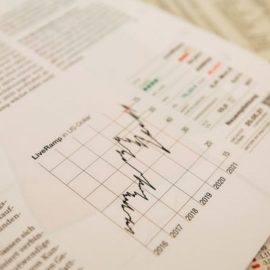

This article is an excerpt from the Shortform book guide to "Capital in the Twenty-First Century" by Thomas Piketty. Shortform has the world's best summaries and analyses of books you should be reading.
Like this article? Sign up for a free trial here .
What is the future of population growth? How does population affect the economy?
In Capital in the Twenty-First Century, Thomas Piketty says that population growth will likely slow in future decades. This means that production will slow down and the capital-to-income ratio will rise.
Check out why the future of population growth is essential for the economy.
The Future of Growth
Piketty writes that the strong population growth of the past few centuries has been the primary engine of economic growth. This is because the key drivers of economic output are a country’s population and its productivity per capita (how much each person can produce in a given time). In other words, the more people there are, the more that can be produced. He warns, however, that the demographic trends that have sustained this growth represented a period of historical aberration—one that the future of population growth proves will likely come to an end.
A Brief History of Population Growth
Piketty writes that the high and rising levels of population—and therefore economic— growth over the past three centuries are a historical aberration. Most of human history before the Industrial Revolution saw meager rates of population growth. Before 1700, total population growth per annum was minuscule—less than 0.1%. The Industrial Revolution, however, expanded economic output per capita on a scale that had never been possible before—the technological and production improvements enabled every worker to produce far more per person. This led to rising incomes, a rising standard of living, and higher food production—all factors that supported a significantly larger rate of population growth.
This growth in population and productivity, writes Piketty, fueled annual economic growth rates of 1.6% between 1700 and 2012. The 20th century saw even greater population growth rates of up to 2% per year. These growth rates have enabled the population of the world to grow tenfold from 1700 to the present day. This, in turn, fueled a tenfold increase in global income per capita over the same period—and a more than twentyfold increase in the wealthiest countries.
The Coming Demographic Slowdown
Piketty writes that this era of strong population growth is likely to slow in the coming decades, with population growth projected to tumble back to around 0.1% per year.
According to Piketty, this stagnating population growth will drag total production down—because the working-age population will represent a smaller share of the overall population. A smaller population would mean a greater proportional share of national income coming from capital. In other words, returns on stocks, bonds, real estate, and other financial assets—which are owned disproportionately by the wealthy—would continue to rise, while wages would start to stagnate, creating a recipe for widespread and worsening inequality.
If national income falls, the capital-to-income ratio will rise, even if the average return on capital stays flat—meaning that wealth earned in the past (and subsequently passed on to already-wealthy heirs) will come to eclipse wealth earned in the present. We’ll explore this in greater detail in a later section.

———End of Preview———
Like what you just read? Read the rest of the world's best book summary and analysis of Thomas Piketty's "Capital in the Twenty-First Century" at Shortform .
Here's what you'll find in our full Capital in the Twenty-First Century summary :
- An analysis of incomes, tax returns, and estate tax returns across different countries
- How capitalism, by its nature, generates economic inequality
- How inherited wealth will soon account for more than earned income






